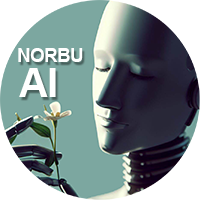Edo Shonin is no Shingon monk
By Gomyo, Japan, The Buddhist Channel, May 30, 2006
I am writing to you about the recent story in the Daily Mail and the letters about it to The Buddhist Channel, concerning Edward Penney (Edo Shonin) and the Pine Forest sangha.
After reading the article as well as the responses from Mr. William John Van Gordon and various readers, I took a look at the Pine Forest web site to see for myself what, if any, connection there might be to the Shingon school of Esoteric Buddhism. I found nothing there to indicate that Mr. Penney has undergone or offers any training in the four meditative practices common to the Shingon School.
In the pictures where an altar is visible, it is neither the style of a home altar for a lay practitioner nor that of a practicing monk. Most notably absent is the altar for performing the Goma fire ritual, which is the central practice of a Shingon monk. The robes worn are not those of a Shingon monk, nor of any school of Japanese Buddhism that I am familiar with. Black robes are common to all schools of Buddhism in Japan.
While Mr. Penney goes out of his way to explain why lineage is not important, he does make the vague claim that he teaches “the older form of Mikkyo which traces it’s lineage to Tathagata Mahavairocana (influenced mainly from the Paekche kingdom in Korea and China).
Mikkyo is not the name of a Buddhist School in Japan, but simply the Japanese word for Esoteric Budhhism, of which there are two schools in Japan. One is Shingon, which I’ve heard Mr. Penney has claimed to represent in the past, before changing the claim to the less precise one above. The other is Tendai. Both Schools were transmitted directly from China and within a few years of each other. There is no connection whatsoever in Japanese Mikkyo (either school) to the Paekche kingdom in Korea. That reference alone tells me that Mr.
Penney has most likely not even read a book about Shingon Buddhism.
The section on Meditations and Teachings makes no reference to Shingon or its philosophy. It sounds more to me like a book report on Thich Nhat Hanh’s commentary on the Heart Sutra, “ The Heart of Understanding “, than anything related to Shingon practice. I would find it easier to believe that he was a monk in the Vietnamese Zen tradition based on what he writes there, if not for the letter from Plum Village denying that he was ever ordained there in any capacity, that I recently had the chance to read. The same letter puts forth a claim made by Mr. Penny to Plum Village that he studied Nichiren Buddhism, another Japanese school, though not one that incorporates esoteric practices.
As a Shingon monk I think it is important that people know that, despite Mr. Penney’s claims, there is no representative of the Shingon School present at the Pine Forest sangha.

